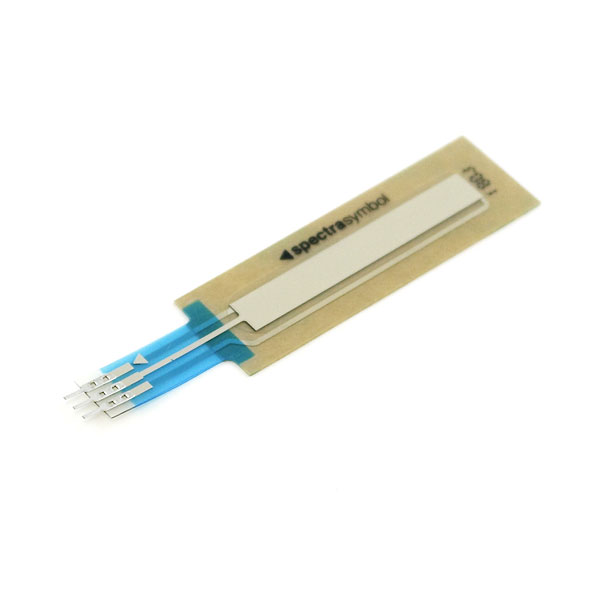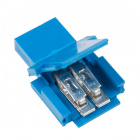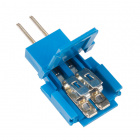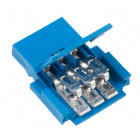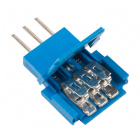SoftPot Hookup Guide
Introduction
Soft potentiometers are very thin and very unique potentiometers. Instead of a knob or physical slider, the softpot's wiper is any object -- a finger, pen cap, stylus, etc -- that can slide across its sensor membrane. Softpots can be used as position sensors in CNC machines, volume control sliders in custom stereos, throttles for drones, or in any project that requires linear movement sensing.
Like any potentiometer, the softpot is a three terminal device. The middle pin is the wiper, and the other two terminals are the high and low ends of the resistive element. By supplying the outer terminals with a power and ground connection, the middle terminal can be used to produce a variable voltage.
Suggested Materials
This tutorial serves as a quick primer on soft potentiometers, and demonstrates how to hook them up and use them. In addition to the softpot, the following materials are recommended:
Arduino Uno -- We'll be using the Arduino's analog-to-digital converter to read in the variable voltage of the softpot. Any Arduino-compatible development platform -- be it a RedBoard, Pro or Pro Mini -- can substitute.
Breadboard and Jumper Wires -- The soft pot three terminals are breadboard compatible. The breadboard is used as an intermediary device between sensor and jumper wires to the Arduino.
Force Sensitive Resistor Adapter -- While the FSR terminals are breadboard-compatible, we've found that it may be loose in the breadboard. For those looking for a way to make a more secure connection without soldering, try looking at the associated Amphenol pin adapters. You will need a pair of needle nose pliers to clamp the the adapter down.
Suggested Reading
SoftPot's are a great entry-level component for beginners, but there are still a few basic electronics concepts you should be familiar with. If any of these tutorial titles sound foreign to you, consider skimming through that content first.
